Museum Mayer Van den Bergh houses the collection of Fritz Mayer van den Bergh, an art connoisseur who specialized in Late Gothic and Early Renaissance art. The museum’s top attraction is «Mad Meg», a painting of a Flemish Folklore figure painted around 1561 by Pieter Bruegel the Elder.
Fritz
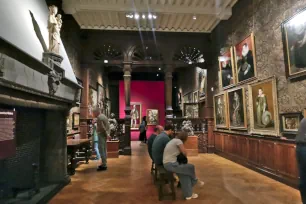
The man behind the art collection is Fritz Mayer van den Bergh, born in 1858 as the son of Emil Mayer and Henriëtte van den Bergh. His father was a successful German businessman and his mother played – as the daughter of an influential businessman and senator – an important part in high society. Fritz was brought up surrounded by art. Artwork by Jan Bruegel the Elder hung on the walls of their luxurious mansion.
Fritz is still attending university when his father dies in 1879. His brother Oscar continues their father’s business and Fritz moves back in with his mother. Both Fritz and his mother have a passion for art. Fritz starts to travel around Europe to attend art auctions. He has a knack for finding quality artwork: he manages to attribute anonymous works to a specific artist and often snatches up works before museums can get a hold of them.
In 1901, after a long illness following a horse riding accident, Fritz Mayer van den Bergh dies at the young age of 43. His mother decides to fulfill his dream of creating a museum, and purchases a house adjacent to their residence for this purpose. The private museum opened in 1904 and invited visitors were guided around by Henriëtte herself. Just two years later she donated the collection to a board of trustees. The museum opened to the public in 1951, when it became a city museum.
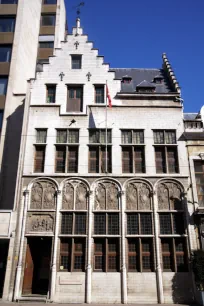
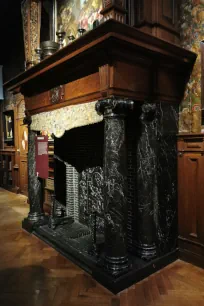
The museum building
Despite the fact that it was built in the early 20th century, the purpose-built museum looks like a late medieval house. Architect Joseph Hertogs based the design on a house from the 16th century that had been torn down. The construction techniques however were modern and the architect even used prefabricated concrete, at the time still a rather novel concept.
The white sandstone facade is designed in a late Gothic, early Renaissance style. Slender columns between the windows support tympanums with blind tracery and shields. The relief above the entrance depicts the Adoration of the Magi. The roof features a stepped gable, characteristic for medieval houses in Antwerp.
The museum will expand in the coming years with the addition of the adjacent childhood home of Fritz Mayer van den Bergh. For this reason the museum will close in April 2025. The new, larger museum is expected to open its doors to the public in 2029.
The home of the Mayer van den Bergh family was originally built in 1530 as a large aristocratic residence. It was split in two when a road was built right through it and the building underwent several more adaptations before it was bought by Emil Mayer in 1861. That same year Mayer had the building remodeled by architect Frans J.H. Bex. The following year, when Fritz was four years old, the Mayer van den Bergh family moved into their new residence.
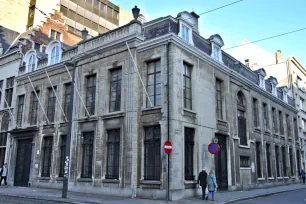
More than a century later a local bank bought the residence and converted it into a bank branch. The city of Antwerp acquired the building in 1998 and used it as the district house for the district of Antwerp until 2021, after which the former residence stood empty. Finally, in 2029 the building will be reunited with the adjacent museum and become one large museum space. Today little remains of the sumptuous interior; only a Louis XVI-style room has been preserved. Thankfully, several rooms including the original courtyard and the Great Gothic Hall will be restored to their former glory.
The museum collection
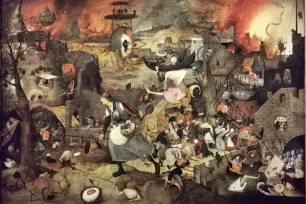
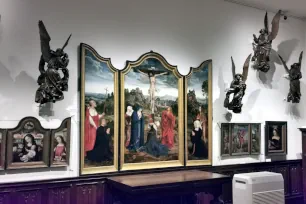
The Museum Mayer van den Bergh has a varied collection of art, mostly focused on Gothic and Renaissance works from Flanders and the Netherlands. The collection includes paintings as well as sculptures, illustrated prayer books, retables, and some oddities like a gilded cradle.
The museum’s top piece is without a doubt «Dulle Griet», a bizarre painting by Pieter Bruegel the Elder from around 1561. It depicts a Flemish Folklore figure known in English as ‘Mad Meg’, who leads an army of women to pillage hell. The painting was originally part of the collection of Emperor Rudolf II of the Holy Roman Empire. Fritz Mayer van den Bergh – at the time already known as a Bruegel expert – bought the painting in 1894 at an auction in Cologne. He only had to pay a modest sum because the artist was identified as Pieter Bruegel the Younger. Just days after his purchase, Fritz studied the painting and realized that it was instead painted by the artist’s father, the much more renowned Pieter Bruegel the Elder.
Another highlight is a wooden sculpture of Christ the Redeemer that depicts Jesus and the Apostle John sitting on a bench. The sculpture, which shows John resting his head on the chest of Jesus, was created in Switzerland around 1280-1290 by Master Heinrich of Constance. It is considered an excellent example of Gothic sculpture.
The museum also owns a triptych by Quentin Matsys, a Flemish painter who is considered the founder of the ‘Antwerp School’. The triptych was painted in 1500-1520 and depicts «Christ on the cross with donors». The detail and architecture in the background landscape are particularly intriguing.
- Next: Begijnhof
- More Sights & Attractions in Antwerp

